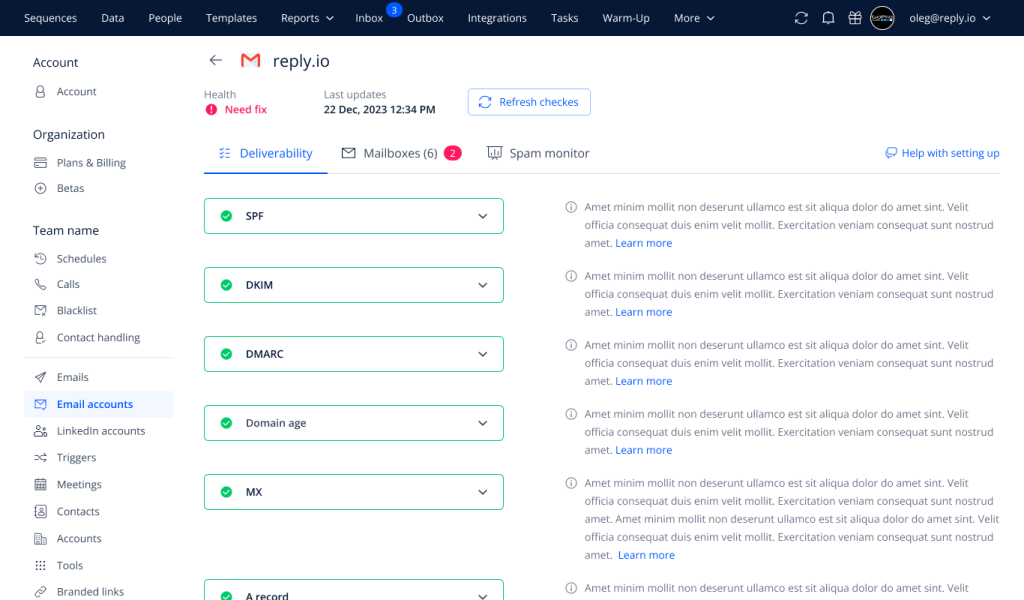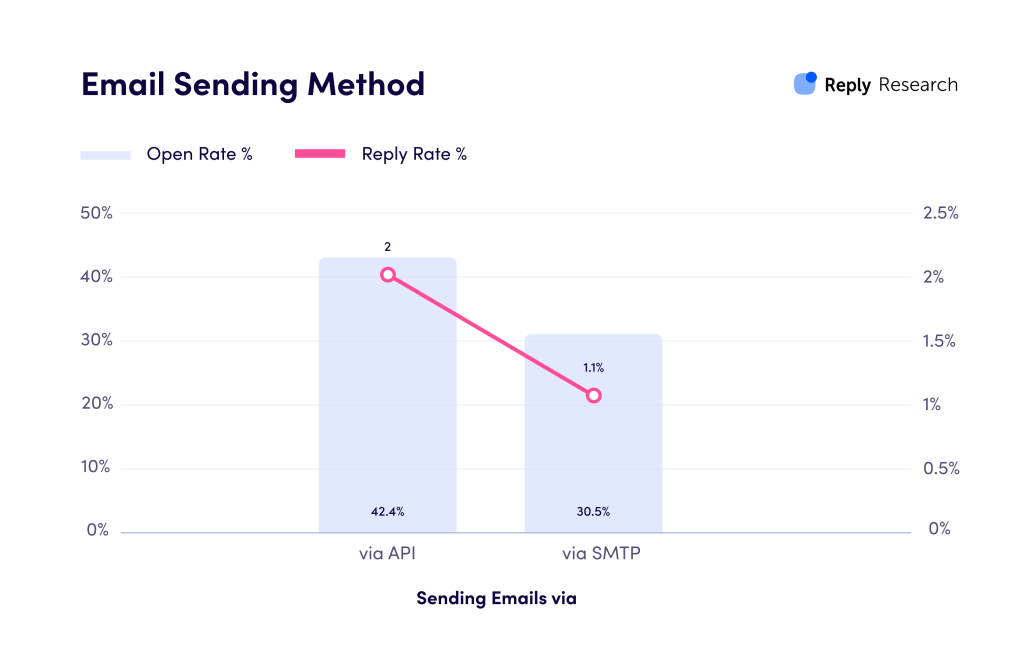I doubt there’s a single business out there that doesn’t send out hundreds or thousands of emails a month to potential and existing customers.
Sure, social media is a great way to connect with your audience and build trust and credibility, but there’s no better way to execute your sales and marketing efforts than with emails, especially for B2B companies.
Most companies gear up with special sales or marketing tools like Reply.io to automate and scale their email outreach, leaving it up to them to ensure everything runs smoothly in the background, and the emails reach their intended recipients’ inboxes, aka email deliverability.
However, huge email service providers like Gmail, Yahoo, and Outlook don’t make it easy.
In their defense, there are tons of malicious, non-solicited, and spammy emails being sent each and every day, and it’s the responsibility of the email providers to proactively flag such emails and prevent them from reaching their users.
The only problem—it’s difficult for them to ensure they’re keeping the ‘bad’ emails at bay but letting business sales and marketing emails go through, 100% of the time.
In this article, we’ll explore and compare the two main methods for sending emails, SMTP and API, and determine how they impact deliverability in the current landscape.
Why all the fuss over email deliverability?
If you’re a B2B professional, chances are you’ve come across the topic of email deliverability at least once or twice over the last couple of years, and you may be wondering, why all the fuss?
Well, considering that emails are the primary communication channel for sales and marketing teams, ensuring they get delivered to the right person at the right time may very well be the difference between a new customer and a lost opportunity.
And that’s just one email.
In the context of thousands, email deliverability can directly impact lead generation, conversions, retention, and ultimately—revenue. This is even more painful when you think about all the time and effort sales and marketing teams invest in building targeted email lists, crafting personalized messages, and developing lead-generation strategies.
Gmail has ramped up its email security policies lately, and businesses that are not cautious run the risk of investing time and resources in their customer communication, only to have a good chunk of those emails never reach the intended inboxes.
Hence, the fuss.








